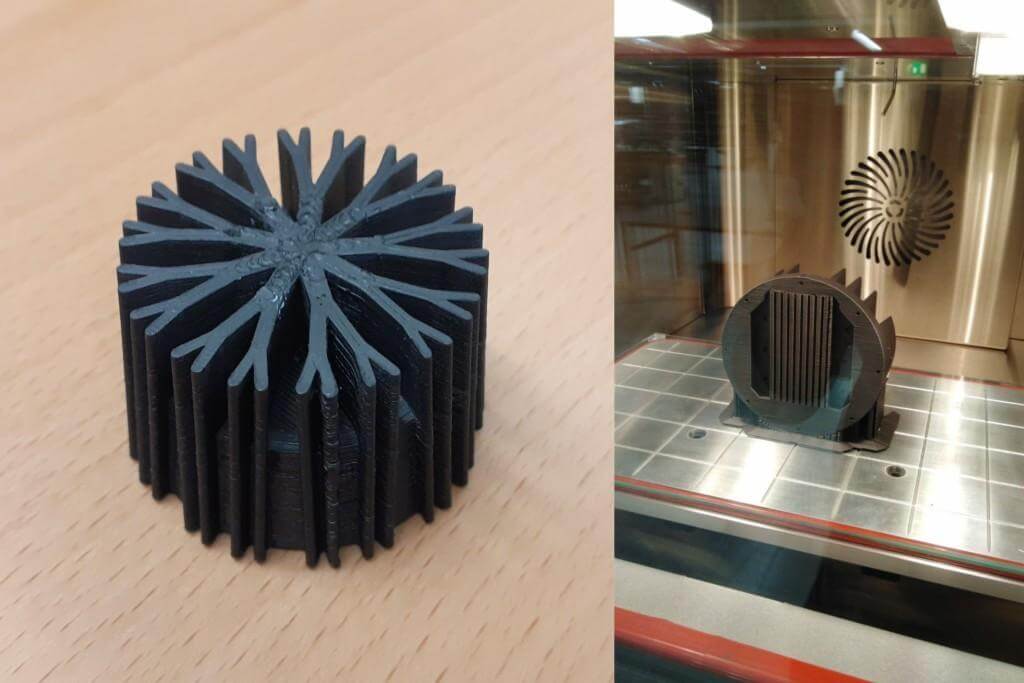Menu
close
Back in June of 2020 we posted about XAMK and the possibilities of professional 3D printing.
The post discussed XAMK: s choice to buy the miniFactory Ultra, and the Ultras application in the AMAP project. It also looked at the possibilities of industrial 3D printing in educational institutes. The goal of the AMAP project is to improve the awareness and knowledge around industrial 3D printing in the South Savo area. In May we went back to see how the Ultra matched their expectations. We found 3 different ways that they have been able to use the miniFactory Ultra that makes it a perfect fit for educational institutes.
Being able to offer industrial 3D printing in universities and educational institutes is a great asset. It opens up new learning opportunities when students get access to the latest technologies. With miniFactory Ultra 3D printer students get to learn about the difference in printing with engineering polymers vs. high-performance polymers. Students also get to learn about the science behind high-performance materials.
A machine like the Ultra provides opportunities to print parts with high-performance polymers that are not possible to replicate with a desktop printer. New kinds of technologies like process monitoring are taking place in 3D printing as well. miniFactory provides the Aarni process monitoring system to the Ultra. XAMK use it to teach how the printing process can be monitored. It shows what data the system provides and how it can be utilized when validating repeatable manufacturing processes for high-end parts.
During 2020 and 2021 through the AMAP project, “Teollinen 3D-tulostus” (industrial 3D printing) online training sessions has been arranged for those who are interested in 3D printing and want to learn more about it. The participants in the sessions get to learn about things like the 3D printing process, durability of 3D prints and design, decision-making of 3D printing and much more.
Having a versatile high-performance printer has benefitted both XAMK and the local industries. There are 10 co-operation companies involved in the AMAP project. The companies involved have been printing different kinds of prototype parts, jigs, and fixtures for all their different research projects.
The Ultra has been going nonstop. At the time of the interview, they had printed 214 parts since it arrived at XAMK. This reveals the huge demand and interest, and the opportunities of high-performance polymers combined with what 3D printing can offer. This kind of co-operation is important for both parties. Educational institutes can teach about the latest technologies. They bring in new ideas and students learn how companies really work with different projects, and to get some valuable experience at the same time.
The miniFactory Ultra has been the workhorse of AMAP. A wide range of different polymers have been printed with one system. The original intention of the Ultra 3D printer was to fill the gap for a machine capable of handling high-performance polymers such as ULTEMs, PEKKs etc. With the miniFactory Ultra, XAMK and the companies they are collaborating with are able to make high-performance polymer 3D printing available to more companies and further the research on FFF-printing with industrial quality and high-performance materials.
One of the most interesting research areas has been printing using materials with good heat conduction properties for different cooling applications, such as heat sinks and studying how different high-temperature materials perform for that purpose.

Another interesting topic has been topology optimization. This means that, depending on the design and need of the part, the material layout has been optimized in a way to maximize the performance of the part. This ensures that the structure is light but still strong enough for the application. The pictures below show two different examples of topologically optimized support brackets.

On top of that XAMK have been using the process monitoring system Aarni for two main purposes. The first purpose is to help with adjusting new printing profiles for new experimental materials. The other purpose is to study the parts and how adjusting parameters may affect the quality, surface roughness, layer adhesion and other critical properties of the printed part. With Aarni, visual experience can be combined with easily understandable process data. That gives a new approach on how to study the process itself.
The 3D printing experience and knowledge have increased quite a lot. They have also gained knowledge about what is possible and what limitations there are to this technology. This is also reflected in the work that goes into designing the printed parts. Now they know to use the benefits and to work around the limitations. The operators did not have that much experience before the project started. This shows the Ultras ease of use, because even without previous experience, anyone can learn to use the printer successfully.
"*" indicates required fields